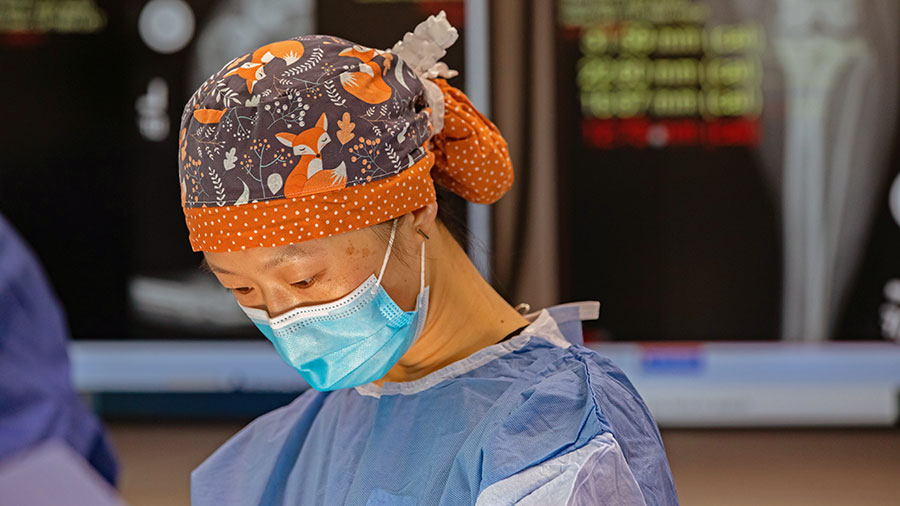There are various reasons why a pet may need an amputation, ranging from external trauma, such as being hit by a car, to a disease state, such as cancer. Although families may be distressed to learn that their pet must lose a limb, many pets continue to have good quality of life after recovering from an amputation. There’s even a supportive online community for people who have (affectionately nicknamed) “tripod” (or “tri-pawed”) dogs and cats.
While the outcome for pets is typically good, surgeons at the University of Illinois Veterinary Teaching Hospital are exploring ways to ensure that the techniques used for amputations minimize pain and inflammation in their patients.
Comparing Ultrasonic, Electrosurgery Approaches
Dr. Rachel Rivenburg, a veterinarian who is completing a small animal surgical residency at the hospital, has launched a clinical trial under the supervision of veterinary orthopedic surgeon Dr. Hadley Gleason.
“All amputation techniques require extensive surgical dissection through muscle tissue, which can be performed with sharp dissection, monopolar electrosurgery, bipolar vessel sealing device, or a newer instrument called a harmonic scalpel,” says Dr. Rivenburg. “Our trial will compare use of one of the current standards in veterinary care, monopolar electrosurgery, with use of an ultrasonic scalpel. An ultrasonic scalpel uses vibrations to cut soft tissue and control bleeding, while monopolar electrosurgery uses energy and heat to accomplish the same results.”
This is the first clinical trial in veterinary medicine to compare these two methods. (In human medicine, use of ultrasonic scalpels in orthopedic surgeries has become more prevalent over the past two decades.) Currently, most veterinary practices do not have ultrasonic scalpels, but studies like this one could move the profession in a new direction.
Patient Pain, Tissue Damage, and Surgeon Preferences
The trial will use standard pain scales to evaluate the patients’ pain levels after the surgery to see if the two approaches yield different results. The study will also look at levels of tissue damage, surgical time, blood loss, and also ask surgeons to report their perceptions about using the two approaches.
Dr. Rivenburg devised the trial because she plans to specialize in surgical oncology, a field where amputation is a common procedure.
“Amputations are very emotional for people,” she says. “Seeing your pet lose a limb is very difficult. We want to make sure we are using the best surgical technique for the comfort of our patients.”
Amputation Trial Eligibility, Compensation
Dogs eligible to participate in the trial will require limb amputation for any reason. They should not have any additional orthopedic disease, have neurologic disease that affects walking, or require additional surgical procedures. Candidates for the trial must show recent bloodwork and imaging of the limb. Additional diagnostics may be required.
Clients with dogs selected for the trial will have a pre-operative consultation with the surgeon. The dog will remain hospitalized for 48 hours after the amputation surgery and will be sent home with pain medication. Clients must bring the dog for a recheck appointment 14 days after surgery and participate in a phone consultation 30 days after surgery. The trial will cover the cost of the second day of hospitalization and cost of the harmonic scalpel if it is used.
The trial, which has already enrolled patients, seeks a total of 32 patients.
“All the patients have done well thus far,” notes Dr. Rivenburg. “They have had no negative reactions to pain score assessments and are walking well after two days in the hospital.”
Individuals or veterinarians who know of dogs that require a limb amputation are welcome to refer the owners to this trial. More information can be found at vetmed.illinois.edu/research/clinical-trials/.
By Alaina Lamp




